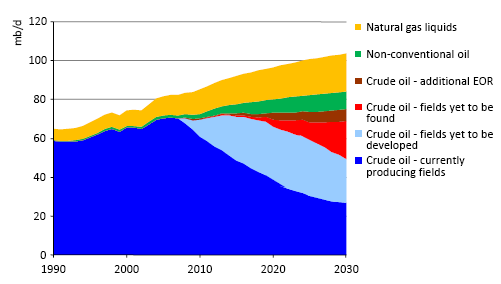Stubble from summer's harvest bristles in every direction. Nothing interrupts the tawny expanse until the road rises to expose hundreds of wind turbines. Tall and shimmery in the midday haze, they overpower the landscape, striking, unsettling.
"I like em," says John Hilderbrand, 81, a straight-talking but jocular wheat farmer who lives along his namesake road in the two-story house his grandfather built in 1900. "They're grinding out dollars."
Hilderbrand, the first in Sherman County to allow turbines on his land, reaps about $30,000 a year in lease payments. And the checks come without fail, he says, unlike the income from his wheat operation, which is squirrelly as the weather.
"Fact is, I don't see any disadvantages," says Hilderbrand, who likes talking about the wind almost as much as spinning yarns of rogue bears, stuffed rats and clueless urban slickers who insist on calling the county's rich glacial silt "dirt" not "soil."
In 2000, Sherman County had no turbines. Now it's home to one of the highest concentrations in the Columbia River Gorge, where a wind-energy boom is under way. The projects in the ground so far represent an investment of close to $1 billion, and they've begun to pump millions of dollars into this county of 1,700 residents, with jobs and tax and lease payments.
The fees alone -- paid in lieu of property taxes -- will double the county's tax base this year and may, in part, be used to write $500 to $800 checks to every resident.
Most directly, the turbines have affected the lives of farmers such as Hilderbrand, who had the good luck to own land in the wind's fierce path and the good sense to turn an industry juggernaut to personal advantage.
Wind energy brings its own set of concerns: higher electricity costs for consumers, environmental impacts, scenic intrusions and an inconsistency that can confound power planners.
Payoffs from wind
But a look at Sherman County through Hilderbrand's eyes hints at the benefits. Farmers are weaving a new industry into the deep traditions of the fields, stabilizing their livelihoods and connecting their farms to their children and communities in ways they never imagined.
"I used to cuss the wind all the time," says Hilderbrand, who begins to grin in anticipation of his own punch line. "These days, that's sacrilege."
John and Wanda Hilderbrand's home, built from brick hauled by horse and ferry from Goldendale, Wash., stands behind a line of cedar and pine trees on the north side of Hilderbrand Lane. Decades ago, John planted the wind break to block the westerlies that blast across the fields. Recently, he suggested chopping them down to open up the views of Mount Adams and Mount Hood. "But the wife said, 'No; they're staying.'"
On this clear October day, Wanda is upstairs packing for a trip to Mexico. The harvest's in; the days are growing cold. "I can't wait" for the warmth of Puerto Vallarta, says Wanda, a slight woman who moves quickly around the house, which has seen several additions over the years and is full of comfortable furniture and generations of family pictures.
Outside, John leaves his Dodge pickup in the driveway and eases into a Mercedes, a dusty gray sedan with 180,000 miles on the odometer, for the short drive to his fields. He's partial to Mercedes, he says -- he has another, bought on eBay, in the garage -- not because they're prestigious, but because they're good solid machines.
"I drive 70 miles round-trip just to buy groceries," he says. The store in Wasco has improved in recent years, but The Dalles remains a regular destination for staples.
Nearby Wasco has little of note, he chuckles, except "the best and the worst restaurant in town": the Lean To Cafe and Goose Pit Saloon.
Mention of the Goose Pit gets him started on the stuffed rat, which holds a spot of distinction in the restaurant bar. But he drops the story's thread as he turns on a gravel road and drives amid the towering turbines. He points out the 11 200-foot towers on his property and 14 more on brother Gordon's land. Scores more stretch in rows and cluster on ridges.
The Hilderbrands' turbines are part of the Klondike wind power projects, owned and operated by Iberdrola Renewables, a Spanish company and one of the largest wind energy developers in the United States. Klondike has been going up in phases -- the first in 2001 -- and now involves 242 turbines and generating capacity of 400 megawatts. Accounting for the wind's variability, that's enough power to consistently light up more than 115,000 homes.
To the north, Portland General Electric has completed the first phase of its 217-turbine, 450-megawatt Biglow Canyon project.
All told, the companies lease land from 55 landowners, most of them wheat farmers in a county that has no industry and a larger percentage of its 831 square miles under cultivation than any other Oregon county.
Sherman County's per-capita income, at $19,550, is the lowest of any county in the state, according to 2006 data, and well below the $33,299 county average for the state.
More wind projects are in the works, including a 400-megwatt project (which could double to 800 megawatts ) by BP Alternative Energy, a subsidiary of BP, and two more projects by Iberdrola totaling 700 megawatts.
"The wife says we should have them on every acre," Hilderbrand says as he guides the Mercedes back onto Hilderbrand Lane and west into Wasco.
Life at the Goose Pit
The Goose Pit, a nondescript building at the south end of town, is in a midafternoon lull. A few regulars drink beer at a roomy bar in the back. John points out the stuffed rat, fur askew and grayish, squatting in a box on the counter. "Shot on the premises," says John, a claim the owner immediately disputes, although she can't remember precisely how the rat got there.
Stuffed animals hang from ceiling and wall: a turkey in full flight; an elk head; half a black bear, its front legs outstretched; a full cougar lounging on a shelf.
A neighbor shot the bear when it broke into his house, John relates. "Had a .30-06. Laid him right out."
The Goose Pit serves as the town's public square. Tall tales, intrigues, schemes, they all find their way into the restaurant near the end of Wasco's short main street. Despite the wind energy boom, the street holds more boarded-up storefronts and peeling paint than viable businesses. But for the locals, the changes are profound.
Kathy Neihart and Mike Gutfleisch have owned the restaurant for 25 years. Only in the past several has the investment begun to pay off.
"It's been a slow uphill climb ever since we started," says Neihart, who moved to Wasco from Portland to escape the big city clamor. About 10 years ago, major renovations put them in debt, and Wasco's dropping population darkened the outlook. "We were getting behind, and there was no way we could have caught up. Those wind towers saved us."
Between 2000 and 2006, Sherman County's population fell by 12 percent. "They were leaving, and no one was coming back to run the farm," Neihart says.
Business has doubled in recent years, she says, and each Saturday night she and Gutfleisch cook as many as three prime rib roasts for a steady stream of customers.
Much of the work associated with the wind farms is in construction -- temporary employment -- economists note. But a lineup of projects in Sherman and surrounding counties, new mobile home parks to house workers and a 14-lot subdivision on the outskirts of town signal some stability for a population that has fallen to 320 from the 2000 level of 380.
Reason to come home
John and Wanda Hilderbrand tried to retire in the 1980s after their two sons and a daughter left town for lives of their own. The couple moved to Black Butte Ranch near Sisters, then to Bend. But they soon returned.
"We met a lot of nice people," Wanda says. "But I said to John, 'It's just not my life.'" She missed her connections to the land, to the plantings and the harvests and to the deer that showed up in her yard almost every morning to eat her roses and peer in the living room window. She even missed the wind.
Now, with the money the turbines provide, the Hilderbrands say they're more relaxed about their finances and more optimistic about their legacy to their children. They can more easily absorb the rising costs of farming and can travel more.
They've been on a cruise through the Panama Canal, vacationed in Costa Rica and purchased a better timeshare in Mexico. And, says John, "I buy a lot of things on eBay -- the wife says too much," including that Mercedes and a backhoe.
Hilderbrand won't say how much he receives from Iberdrola. Generally, landowners are paid $3,000 to $5,000 annually per turbine, the amount rising with turbine capacity. That means a farmer with 10 turbines earns $30,000 to $50,000 a year.
The turbines' concrete pads eat up some land, but farmers work around them. Hilderbrand estimates that his 11 turbines take three acres of his 1,200 acres out of production.
Farming of soft white wheat, most of which is shipped to Japan, remains the mainstay, he says, but "I make a really nice amount" from the turbines.
Most important, the Hilderbrands say, the wind turbines have given their children a reason to come home.
Ormand and Jeff left Wasco after college. Ormand, with a graduate degree in international business, traveled the world selling irrigation equipment. Jeff settled into a commercial banking job in Beaverton.
"You either stayed to farm or you left," says Ormand, who lives in Walla Walla. There was a lot more money to be made in what I was doing than in going back and farming." The Hilderbrands' daughter, Jill Burilson, lives in Brush Prairie, Wash.
This year, the wind lured the brothers into a small-scale project of their own. They've hooked up with a San Francisco investment company that will bankroll a six-turbine, 10-megawatt project and take advantage of the ample state and federal tax credits tied to wind energy development. They hope to complete the project on a section of the family property by mid-2009.
"I wanted a chance to come back home," says Ormand, who plans to buy a place near town. "I saw what my dad was doing, but I never thought I'd have the opportunity myself."
 Dark news yesterday coming out of West Virginia. In what may be an effort to sneak in some very bad news before the holiday, the West Virginia Department of "Environmental Protection" (seems like a misnomer today!) granted Massey Energy a permit to begin blasting away Coal River Mountain as soon as the company is ready. Massey plans to decimate the mountain to extract coal using a destructive mining practice know as mountain top removal (see previous posts here for more on the dastardly practice).
Dark news yesterday coming out of West Virginia. In what may be an effort to sneak in some very bad news before the holiday, the West Virginia Department of "Environmental Protection" (seems like a misnomer today!) granted Massey Energy a permit to begin blasting away Coal River Mountain as soon as the company is ready. Massey plans to decimate the mountain to extract coal using a destructive mining practice know as mountain top removal (see previous posts here for more on the dastardly practice).
























